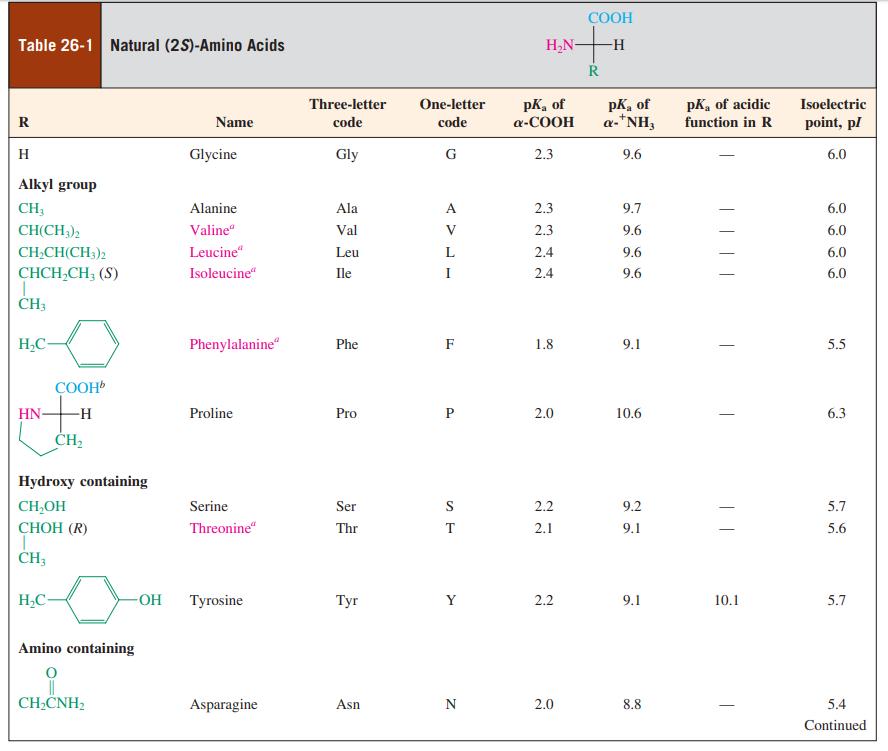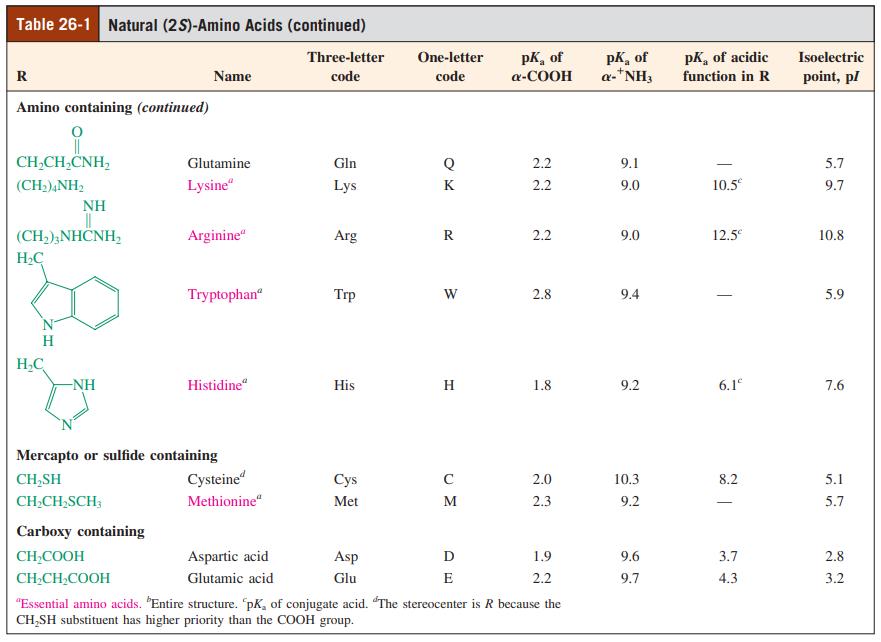In addition to the conventional 20 amino acids in Tables 26-1 and 26-3, two others, selenocysteine (Sec)
Question:
In addition to the conventional 20 amino acids in Tables 26-1 and 26-3, two others, selenocysteine (Sec) and pyrrolysine (Pyl), are incorporated into proteins using the nucleic acid–based cell machinery. The three-base codes for Sec and Pyl are UGA and UAG, respectively. These codes normally serve to terminate protein synthesis. However, if they are preceded by certain specifi c base sequences, they instead cause incorporation of these unusual amino acids and continued growth of the peptide chain.
Pyl is rare, occurring only in some ancient bacteria. Sec, containing the side chain CH2SeH, is widespread; in fact, it occurs in at least two dozen human proteins that rely on the reactivity of the essential trace element selenium for their function. The pKa for the SeH group in Sec is 5.2. (For comparison, the pKa for the SH in Cys is 8.2.)
(a) Draw the structure of Sec at pH 7; compare it with that of Cys at the same pH.
(b) Determine pI for Sec.
(c) Given the relationship between sulfur and selenium in the periodic table, and the pKa differences between SH and SeH, how do you expect the chemical reactivities of Sec and Cys to compare?
Table 26-1


Table 26-3

Step by Step Answer:

Organic Chemistry structure and function
ISBN: 978-1429204941
6th edition
Authors: K. Peter C. Vollhardt, Neil E. Schore





